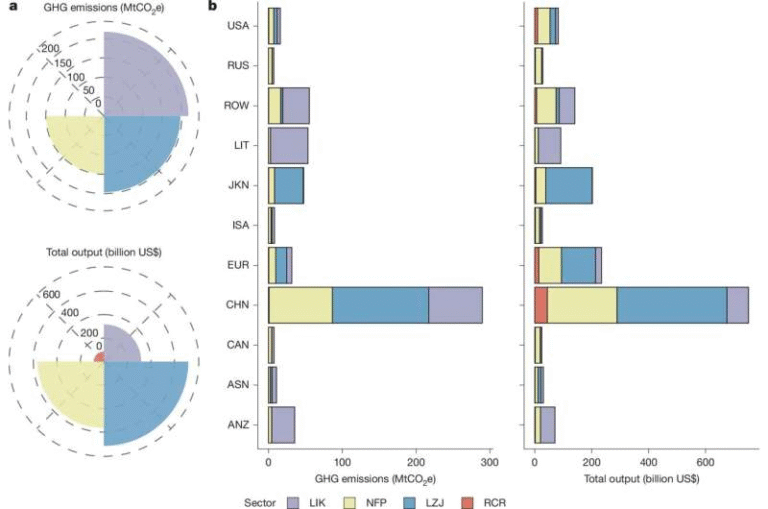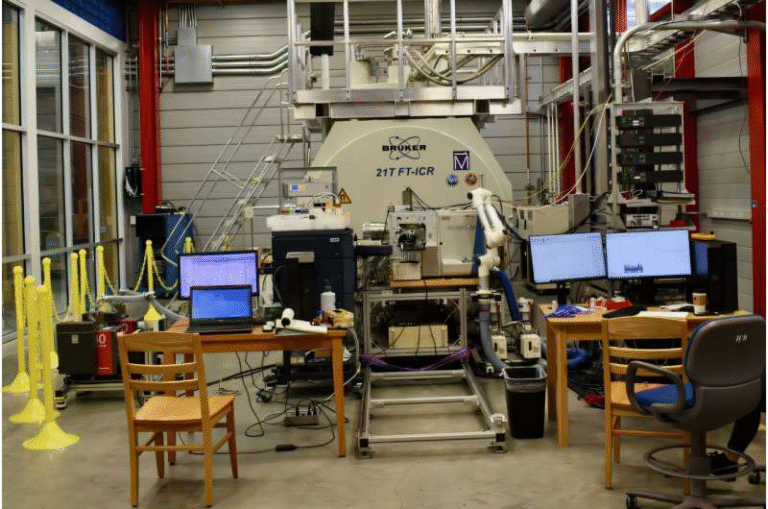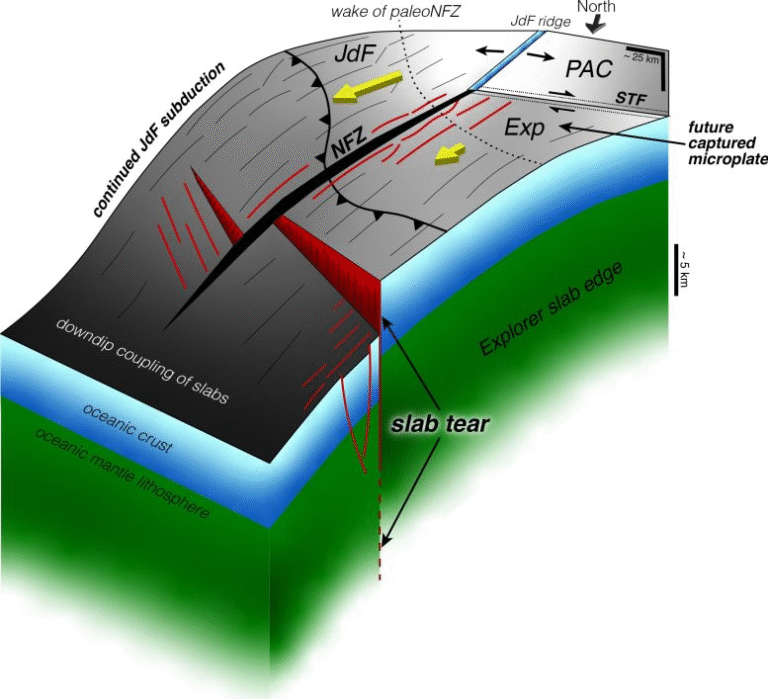Why Earthquakes Still Shake Supposedly Quiet Regions

Earthquakes are usually linked with regions where tectonic plates collide, slide, or pull apart — places like Japan, Chile, or California. But what if quakes also occur in areas where the Earth’s crust is supposed to be stable and silent? That’s exactly what a new study from Utrecht University in the Netherlands has explored, and its findings challenge long-standing geological assumptions about “safe” regions of the world.
Researchers Meng Li, André R. Niemeijer, and Ylona van Dinther recently published their work in Nature Communications, showing how earthquakes can occur in what are called tectonically stable or silent regions. The explanation involves a process that takes millions of years, quietly setting the stage for a sudden jolt: fault healing.
When “Stable” Faults Aren’t Really Stable
In geology, faults are fractures in the Earth’s crust where rocks can move past one another. Some of these faults are classified as velocity-weakening, meaning they tend to slip suddenly — these are the usual culprits behind major earthquakes. Others are called velocity-strengthening faults. These are thought to move smoothly, gradually releasing stress without generating violent shaking.
For decades, textbooks have taught that velocity-strengthening faults — the kind found in shallow subsurfaces and old, inactive regions — don’t produce earthquakes. But this study says otherwise.
According to the Utrecht team, even these stable faults can suddenly rupture after being inactive for millions of years. The reason? They heal over time.
The Secret Strength of Fault Healing
The study highlights that inactive faults slowly regain strength through a natural process called frictional healing. Over long periods without movement, minerals and microscopic contacts along a fault’s surface grow and bond more tightly. This gradual strengthening increases the static friction between rock layers, making the fault more resistant to movement.
Ironically, that extra resistance means that when movement finally does occur — for instance, due to human activities like gas extraction, geothermal drilling, or underground fluid injection — the release of energy can be much more sudden and intense.
This discovery explains why earthquakes have occurred in regions like Utah (USA), Soultz-sous-Forêts (France), and the Groningen province in the Netherlands. These areas shouldn’t, by all logic, experience seismic shaking. Yet they do — and now we know that fault healing is likely the key.
One-Time Events, But With a Punch
Here’s the interesting part: the researchers found that once a healed fault ruptures, it tends to stabilize. The earthquake releases the extra strength that has built up over time, and afterward, that same section of the fault is less likely to produce another quake anytime soon.
This means that while such earthquakes can be sudden and damaging, they are typically one-time events for that particular fault segment. Once the stored energy has been released, the fault “settles” into a more stable state again.
However, the first quake can still pose serious risks, especially because it often happens closer to the surface — within just a few kilometers of depth. These shallow events cause stronger shaking at the surface, and infrastructure in “quiet” areas is rarely designed to handle it.
Implications for Energy and Engineering
The findings have major implications for how we use the subsurface of the Earth. With the increasing push for sustainable energy solutions, humans are turning to underground resources — geothermal power, hydrogen storage, and carbon sequestration are just a few examples.
The study suggests that even if an area seems geologically stable, there’s no guarantee that old, healed faults won’t react when disturbed. Activities like fluid injection (used in geothermal energy or carbon storage) and gas extraction (as in Groningen) can subtly change underground pressures and trigger motion along these “silent” faults.
This doesn’t mean such projects should stop altogether. Instead, it highlights the need for better fault monitoring, stress modeling, and risk assessment before large-scale operations begin.
Once a healed fault slips, it tends to become more stable, which means the overall risk can decrease over time. That’s a positive note — but identifying which faults are “healed and ready” is the hard part.
Understanding Velocity-Strengthening vs. Velocity-Weakening Faults
To understand the study’s importance, it helps to know the difference between velocity-strengthening and velocity-weakening faults.
- Velocity-weakening faults are typical in active tectonic zones. As they start to move, the friction between the rocks decreases, allowing rapid slip — that’s what produces a traditional earthquake.
- Velocity-strengthening faults, on the other hand, increase in friction as they move, leading to slow, stable sliding — or so we thought.
What Utrecht researchers found is that when a velocity-strengthening fault undergoes long-term healing, its frictional behavior can temporarily change. Once triggered, it can act like a velocity-weakening fault, slipping suddenly and creating an earthquake.
After that, the fault usually transitions back to stable behavior.
Induced Earthquakes and Human Activities
A growing number of earthquakes around the world are not natural — they’re induced by human activities. These include mining, reservoir filling, wastewater disposal, or energy extraction. The Groningen gas field is a prime example. Gas extraction there has led to a series of induced quakes, even though the area is far from any tectonic plate boundary.
The new Utrecht University research gives a physical explanation for how this can happen. If an inactive, healed fault lies beneath such a site, human activity can reduce the stress barrier just enough to trigger a quake.
In most cases, that’s a one-off event — but the first one can be strong enough to cause real damage, especially when it occurs directly under populated regions.
What This Means for Future Earthquake Risk
This study changes how we think about seismic risk in “safe” regions. It tells us that no region is completely immune, especially when human actions modify the subsurface environment.
However, the research also gives a silver lining: once a healed fault ruptures, it tends to remain quiet afterward. So, the maximum earthquake magnitude expected in such regions might actually be lower than previously feared.
For scientists and policymakers, this means seismic hazard models need to factor in fault healing and time-dependent strength recovery. Monitoring healed or inactive faults could help predict where the next induced earthquake might happen — before it’s triggered.
The Broader Picture of Seismic Behavior
Across the world, the majority of large earthquakes occur along plate boundaries — the Pacific Ring of Fire, the Himalayan belt, or the San Andreas Fault. But smaller earthquakes in intraplate regions, though less frequent, can be equally puzzling and damaging.
Regions like the central United States, western Europe, and parts of Asia have all seen low-level but persistent seismic activity without clear tectonic drivers. Many of these events are linked to human-induced stresses or long-healed faults similar to those described in this study.
Understanding how these “silent” faults behave can improve not only local hazard assessment but also our general understanding of how the Earth’s crust stores and releases stress over time.
A New Way to Think About Safe Ground
The main takeaway from this research is simple yet powerful: earthquakes can happen almost anywhere, even where the ground has been quiet for millions of years. Healing, strength accumulation, and human interference all play a part in turning a seemingly stable fault into a potential earthquake source.
But once it happens, that same fault may become a barrier to further shaking — a kind of built-in safety reset.
This knowledge doesn’t just refine how we map earthquake hazards. It also helps guide the responsible use of Earth’s underground space, ensuring that our pursuit of clean energy and storage technologies is balanced with a clear understanding of geological risks.
Research Paper Reference:
Frictional healing and induced earthquakes on conventionally stable faults – Nature Communications (2025)





